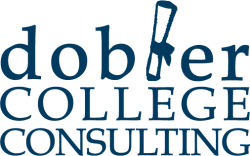Applying For Financial Aid
 If your son or daughter is going to college, then you already know that you need to apply for financial aid. What you may not know is that there are two different financial aid applications.
If your son or daughter is going to college, then you already know that you need to apply for financial aid. What you may not know is that there are two different financial aid applications.
First, let’s talk about the application everyone needs to fill out before we talk about the application some of you will need.
The FAFSA is the Free Application for Federal Student Aid. It’s the application that is required by every college in order to consider and then award financial aid to your son or daughter. The FAFSA is free and while it will take some time to fill out, if you organize yourself ahead of time it will be much easier.
The FAFSA is a smart form which you will find very helpful. Based on the information you enter, the FAFSA customizes the questions so that you only need to answer questions that pertain to your individual situation.
While everyone needs to fill out the FAFSA, based on colleges you are applying to, some of you may also need to fill out the CSS Profile.
The Profile is only required by a couple hundred private schools in addition to some scholarship programs. Unlike the FAFSA, the Profile is not free. It will cost you $16 to register and then an additional $9 per school for each school to which you send the form.
Starting your Profile application is a two-step process. First, you must register. And you must do this in one shot. There’s no saving and going back, so get your documents and information together first, register for the Profile, and then complete the applications.
To help yourself out with the FAFSA and the CSS Profile, you will want to collect the following before you get started:
- Student’s social security number
- Student’s driver’s license number
- Statements for checking and savings accounts
- Copy of last year’s tax return and W-2’s
- Statements for any investment accounts
- Current mortgage statement (Profile only)
Both applications go live on October 1st so it’s important to start your financial aid application planning now. While the college admissions process is about to take center stage for the next couple months, it’s also time to think about the financial end of things. It can get complicated with college visits, prepping for the ACT and SAT, completing applications and looking at the financial picture.
If you want some help and guidance to make sure you’re doing it right, set up an appointment today for a free consultation.



